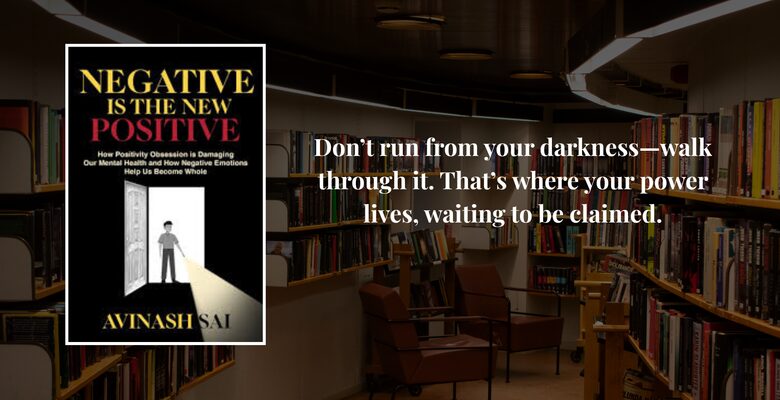7 Lessons from the book Negative Is the New Positive

In a world obsessed with sunshine, smiles, and silver linings, negativity often gets a bad rap. We’re told to “stay positive,” “look on the bright side,” and “keep your chin up” — but what if that relentless pursuit of positivity is actually holding us back?
Enter Negative Is the New Positive by Avinash Sai — a bold, thought-provoking book that challenges the conventional self-help wisdom. Rather than pushing you to bury your struggles under a forced smile, the book encourages readers to confront, embrace, and even grow through their negative emotions. It’s not about wallowing in self-pity. It’s about facing the storm head-on and realising the storm might be your greatest teacher.
If you’re tired of toxic positivity and are looking for real, raw insight into how life’s darker moments can lead to profound personal breakthroughs, this book might just flip your mindset.
7 transformative lessons from Negative Is the New Positive
1. Negativity is not the enemy
The book opens with a powerful idea: negativity isn’t something to eliminate — it’s something to understand. Our discomfort with negative emotions often stems from how we’ve been conditioned to fear them.
Sai reframes negativity as a natural and valuable part of the human experience. When you stop running from fear, sadness, or failure, you can begin to learn from them. Suppressing emotions only makes them stronger. Facing them makes you wiser.
2. Pain is a mirror, not a punishment
Instead of seeing pain as punishment or bad luck, Sai suggests viewing it as a mirror that reflects parts of ourselves we need to heal, acknowledge, or strengthen.
Every painful moment, whether it’s heartbreak, rejection, or failure, shines a light on what we value, where we’ve placed our identity, or where we need boundaries. Pain is information. The lesson? Don’t run from it. Study it.
3. Failure builds emotional muscles
Too often, failure is seen as a dead end. But according to Sai, failure is more like a personal trainer — tough, demanding, but ultimately building your inner strength.
He encourages readers to track their failures and find patterns: What did you learn? What didn’t work? What was out of your control? Eventually, you begin to fail forward, turning losses into stepping stones.
4. Vulnerability is a superpower
We live in an age where filters are applied not just to photos, but to emotions. Avinash Sai flips this trend by celebrating vulnerability as a core strength.
Being open about your struggles doesn’t make you weak — it makes you real. Vulnerability is where connection begins and healing happens. And in a hyper-curated world, being real is revolutionary.
5. Authenticity over positivity
One of the book’s most repeated messages is: don’t fake it. Positivity that ignores reality is just denial wrapped in glitter. Sai urges readers to prioritise authenticity — being honest about what they feel, even when it’s uncomfortable.
This shift from forced positivity to honest presence is freeing. When you’re authentic, your confidence grows because you’re no longer pretending. You’re finally aligned with your truth.
6. Negativity fuels innovation and change
Many great ideas, revolutions, and movements were born from dissatisfaction. Sai argues that negative emotions like frustration or anger are often the first sparks of creativity and transformation.
Feeling fed up with your job? That discomfort might push you to start your own business. Sick of societal injustice? That anger could fuel your activism. Negativity, when channelled well, becomes a fire that forges new paths.
7. Growth begins in the shadows
Perhaps the deepest lesson in the book is this: true growth doesn’t start in the spotlight — it starts in the shadows. In those quiet, dark, painful places we often avoid.
By sitting with discomfort, instead of escaping it, we gain clarity. We meet our real selves. And from that deep inner knowing, we rise — not just healed, but transformed.
Final thoughts
Avinash Sai’s Negative Is the New Positive doesn’t sugarcoat life — and that’s exactly why it resonates. In embracing the negative, we don’t become bitter; we become balanced. We don’t stay stuck; we move through. And we don’t deny our pain; we learn to grow from it.
Negativity isn’t the opposite of growth — it’s the catalyst for it. So the next time you feel overwhelmed by life’s shadows, remember: that’s where the roots grow deep. That’s where the real work happens. That’s where the transformation begins.






